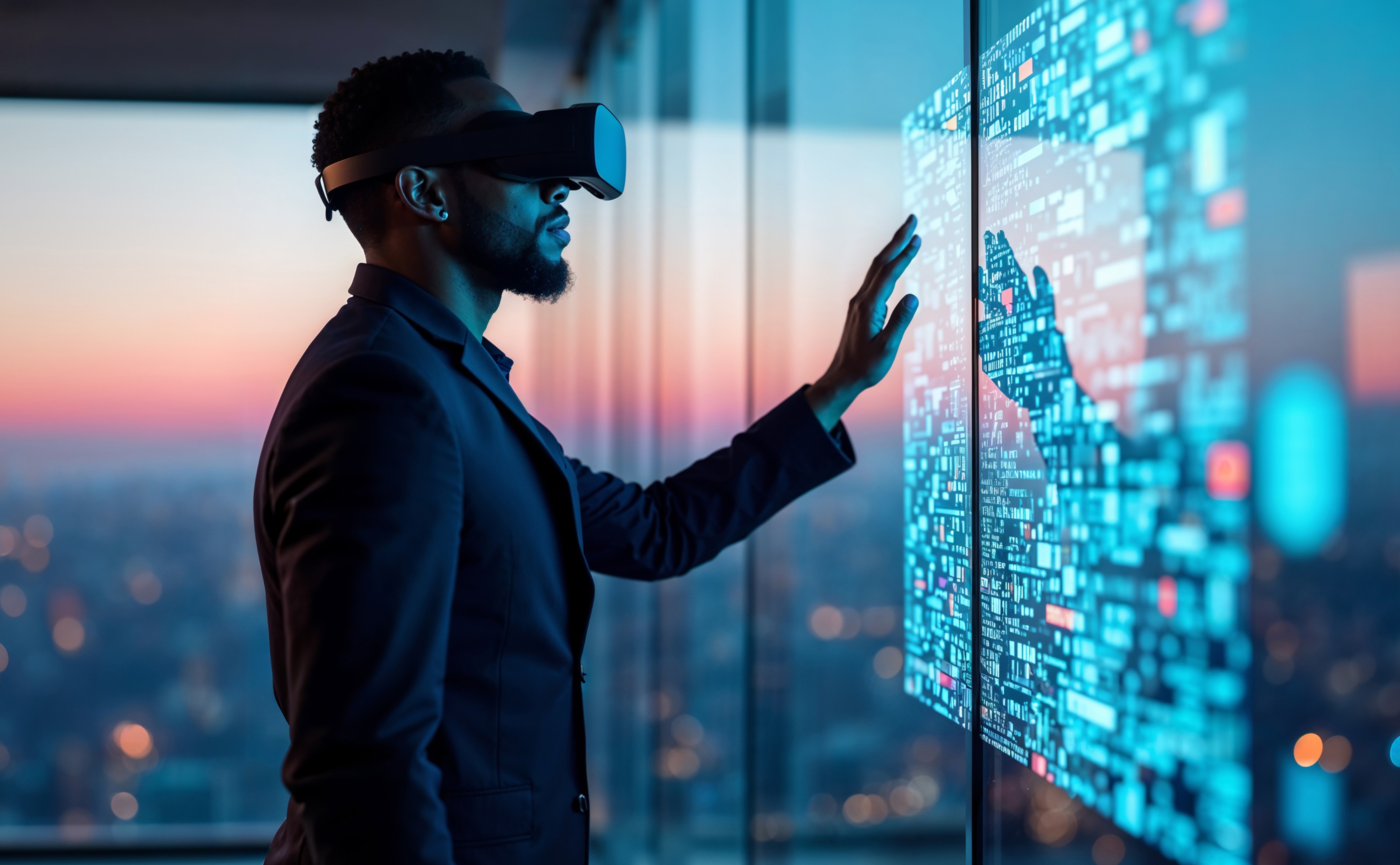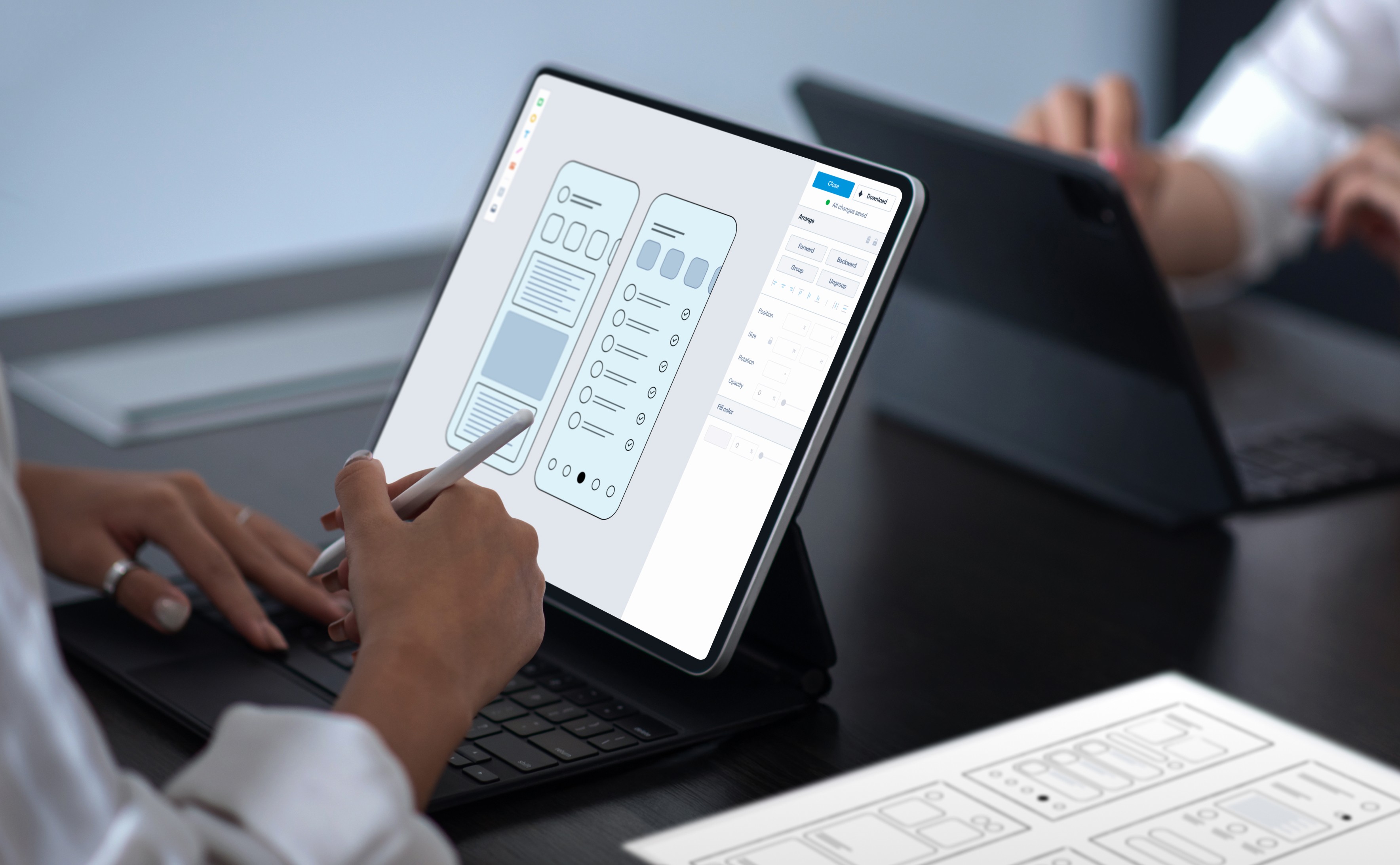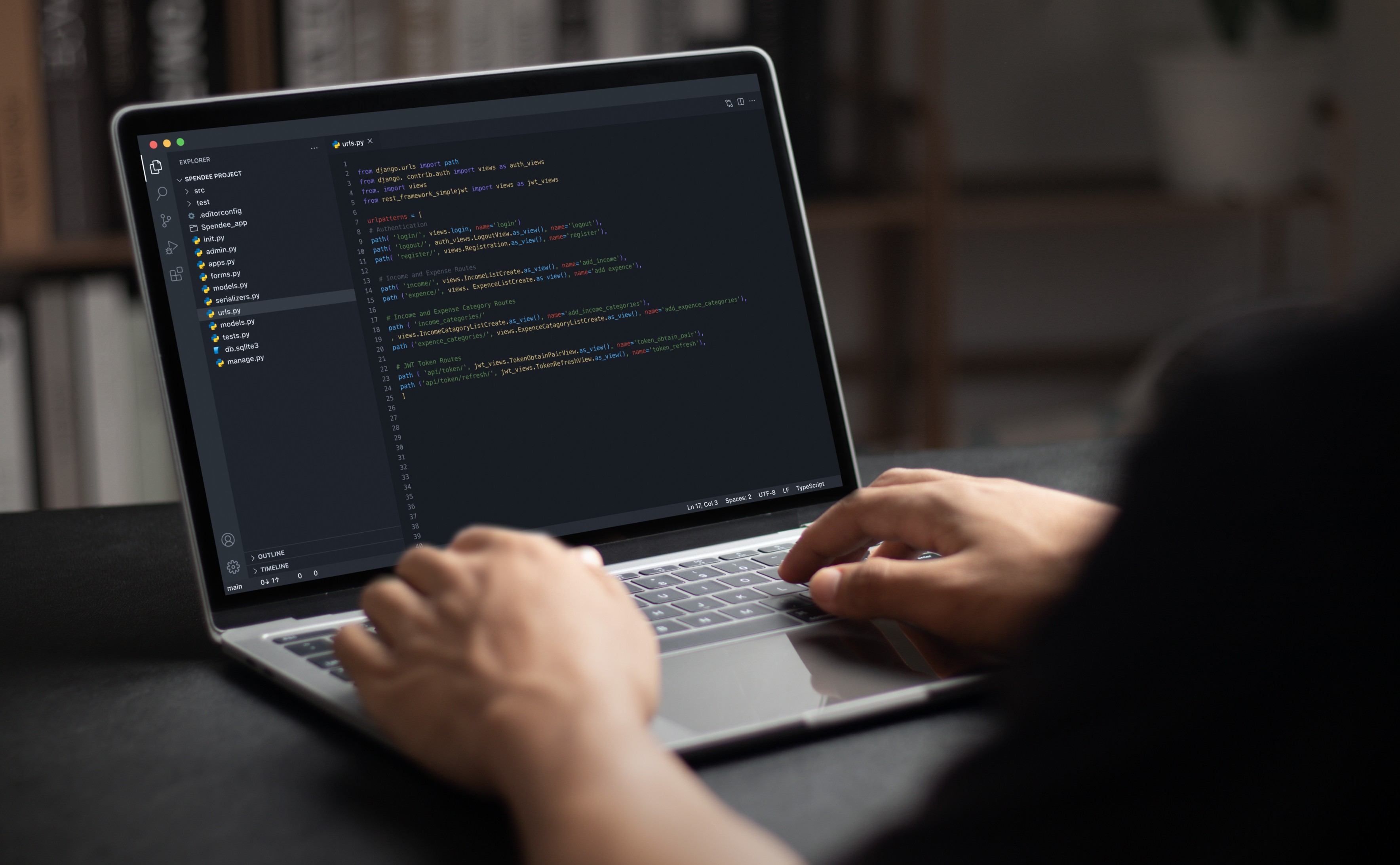Top Software Development Trends to Look Out for in 2026
Listen to this article

IT spending is on a steep climb. In 2024, 61% of businesses planned to increase their spending on technology. The same report by Gartner found that 92% of companies considered investing in AI tools.
This rise is global, and it’s not slowing down. Gartner reports that global IT spending will rise to $5.6 trillion.
So, the real question is: what should businesses focus on to stay competitive?
In this article, we’ll look at the latest technologies in the software industry that will reshape the world as we know it. Let’s dive in.
Top Software Development Trends in 2026
Before diving into individual trends, it’s clear that 2026 will be a massive year for software development. Rapid advances in AI, codeless solutions, and cloud applications are forcing businesses to rethink how they design, build, operate, and monitor applications. They’re also shifting how we work and use their services.
In the following sections, you’ll discover which technologies are reshaping workflows, accelerating delivery, and setting the stage for the next decade of digital transformation.
1. Artificial Intelligence Becoming an Everyday Assistant
By 2026, AI will have become a core part of every developer’s toolkit, no longer a novelty but a necessity. In fact, 84% of developers are already using or planning to use AI tools in their workflow, up from 76% last year, and over half (51%) now use them daily. Tools like GitHub Copilot, Claude with Claude Code, Cursor, and Windsurf now act as intelligent pair programmers, offering real-time context-aware suggestions, code refactoring, and automated documentation. Developers use AI not only to write and debug code but also to manage entire workflows from designing architecture and generating tests to deploying and monitoring applications.
This shift has redefined productivity. Modern AI tools are multimodal, understanding code, text, and even voice inputs, allowing developers to communicate naturally with their assistants. What once took months to build can now be achieved in weeks, leveling the playing field for startups and small teams.
At the same time, autonomous AI agents have emerged as powerful co-workers across industries, handling customer support through AI voice agents, managing CI/CD pipelines, or coordinating backend processes without human intervention. As these systems grow more capable, the line between assistance and autonomy continues to blur, marking a new era of intelligent, self-directed development.
2. Low‑Code/No‑Code Platforms Empowering Citizen Developers
Not everyone who needs an app is a developer. One of the most recent trends in IT is low-code platforms and no-code platforms. These let people build software by dragging and dropping blocks or writing very minimal lines of code. Finance teams can spin up budgeting tools, HR can create onboarding workflows, and marketing can launch campaign microsites—all in days.
This trend is exploding. According to Gartner, by 2026, the low-code technologies market will grow to $44.5 billion.
These platforms speed digital transformation and cut backlog. But there’s a catch: without guardrails, “citizen developers” could create apps that lack security checks or version control. That’s where platform engineering teams step in. They enforce API rules, automated security scans, and a link to git repositories so every new form or report still meets company and compliance standards.
The result is a hybrid world. Non-technical teams can quickly build simple apps, while software engineering teams can focus on complex projects and safety checks. All of it runs inside an integrated development platform, giving businesses the agility to experiment without chaos.
3. Cybersecurity Automation for Proactive Threat Defense
Cyber threats are growing fast, so in 2026, keeping software safe is a top trend. One significant danger is ransomware, where hackers lock up data and demand money. In fact, 59% of companies were hit by ransomware in 2023.
At the same time, hackers are using malicious software development to build sneaky programs that slip past basic defenses. To fight back, companies lean on AI-driven automation, using smart tools to spot and block threats in real time, without waiting for humans to catch every warning.
Another key part is platform engineering, where teams build shared systems that bake security into every step of making and delivering code. This way, safety checks happen automatically before apps go live, cutting down weak spots.
Together, these approaches shape sustainable software development by making products both reliable and secure. In 2026, mixing AI, strong platforms, and up-to-date cybersecurity defenses will help businesses stay ahead of attackers and protect user data.
4. Cloud‑Native Architectures Powering Hybrid Workforces
The shift to remote and hybrid work models has supercharged demand for cloud computing. Nearly one-third (33%) of organizations now spend more than $12 million annually on public cloud services, reflecting how critical cloud-native architectures have become for enabling distributed teams. The International Data Corporation (IDC) forecasts continued double-digit growth in cloud adoption by 2025.
With distributed teams, companies replace on-premises expensive hardware with a microservices architecture running on AWS, Azure, or GCP. Cloud-hosted CI/CD pipelines, containerization, and serverless computing let developers release features around the clock and maintain uptime across time zones.
This also leads to an increase in the use of cloud-based remote work software, which becomes increasingly crucial for distributed teams.
This is particularly true for businesses whose main offer is software as a service (SaaS) or platform as a service (PaaS).
Expect a surge in platform engineering roles focused on building self-service portals that hide cloud complexity, letting engineers concentrate on writing reliable software.
5. IoT Networks Driving Real‑Time Operational Optimization
By aggregating and analyzing continuous data streams, IoT empowers leaders to optimize asset performance, predict maintenance needs, and unlock recurring revenue through data-driven services. Enterprise adoption of IoT is surging as organizations seek to drive efficiency, enhance customer experiences, and inform high‑impact strategic decisions.
By the end of 2024, about 18.8 billion IoT devices were connected worldwide. That’s more than twice as many people on Earth, each one humming away and creating data for developers to turn into helpful apps and tools. IoT Analytics estimates the market will grow to $21.5 billion in 2025 and $41 billion by 2030.
Why is this such a big deal for software developers in 2026?
First, more devices mean more chances to build solutions that track health vitals, water crops just right, or even reroute traffic when roads get busy. Second, because these gadgets send nonstop data streams, engineers need new platforms and code libraries to sort, secure, and analyze them quickly. Lastly, as companies race to automate everything from hospital rooms to city grids, skilled IoT developers are in hot demand, helping businesses save time, cut costs, and deliver more innovative services.
6. Quantum Computing for Enterprise‑Scale Problem Solving
Quantum computing harnesses qubits. These exploit superposition and entanglement to tackle optimization, simulation, and cryptographic challenges far beyond classical systems.
The global quantum computing market will grow to $450–850 billion in the next 15 years. That means big companies are building and testing quantum tools right alongside their usual apps.
What does that look like for software developers? They’ll mix old‐school code with new “quantum” libraries, running simple quantum tasks on the cloud to solve problems classical computers struggle with. Things like simulating molecules for drug discovery or finding the best routes in huge delivery networks. Plus, cloud services now let teams experiment without owning fancy hardware.
Ready to future-proof your business with the software development trends?
Let’s talkLoading...
7. Internet of Behavior: Insights‑Driven Personalization
The Internet of Behavior (IoB) takes data from smart devices, like phones, watches, or in-store sensors, and learns what people do and like. By studying browsing habits, purchase histories, and even how long someone pauses by a product shelf, businesses can tailor offers in real-time.
It’s one of the new technologies in software, so it’s not very mainstream yet.
In 2023, the IoB market reached $432.2 billion and is set to grow at over 23% per year through 2032, thanks to more AI tools, data analytics, and behavioral science.
Consumer IoB applications include loyalty apps that suggest deals based on past buys to smart city systems that tweak traffic lights for safety and flow. B2B SaaS platforms may calculate “churn risk” scores by analyzing login patterns and support requests, predicting which customers will likely cancel soon.
Yet personalization must respect privacy. Laws like GDPR and CCPA require explicit consent, and new ethical guidelines for IoB are emerging. Developers build secure data lakes that encrypt behavior data and use federated analytics. This is where raw data stays on devices, and only insights move to the cloud, balancing tailor-made experiences with user trust.
8. DevOps and CI/CD Pipelines for Continuous Innovation
DevOps brings developers and IT teams together to build, test, and release software faster and more reliably. In modern software development, it’s all about creating automated workflows. This is known as CI/CD pipelines that power continuous software delivery.
A February 2024 analysis of GitHub repositories showed that 32.7% had already adopted CI/CD technologies. Automated delivery is now a core part of how code gets out into the world. These pipelines automatically run tests, compile code, and deploy updates, so that new features and fixes reach customers without manual handoffs.
In 2026, this practice will slash the time from writing code to seeing it live. What used to take weeks can now happen in hours. It also catches bugs earlier by running tests with every change, cutting down on costly rollbacks.
Together, DevOps and CI/CD are transforming how businesses handle software delivery, making updates quicker, more dependable, and better aligned with customer needs.
9. FinOps and GreenOps: Optimizing Cost and Carbon Footprints
More and more teams are bringing together cost control and eco-friendly practices. This is what’s called financial operations (FinOps) and green operations (GreenOps). Combined, these two will help drive sustainable software development in 2026.
FinOps helps companies watch and manage their cloud bills in real-time. GreenOps adds an environmental twist by measuring and cutting the carbon footprint of that cloud usage. Put them together, and you get software delivery that’s both cost-efficient and kinder to the planet.
Why is this important in 2026?
For starters, cloud costs keep rising, and so do energy bills. According to IDC, about 60% of organizations had adopted FinOps by 2024. At the same time, tools for tracking power use and carbon emissions in data centers are becoming standard parts of DevOps toolchains.
The explosive growth of AI-first engineering, think Copilot-style pair-programming assistants and code-quality bots powered by large language models, means teams are running ever-larger training jobs and inference pipelines in the cloud. Those workloads live in massive data-center clusters, and their rising energy demand has become a hot-button sustainability issue.
Forward-thinking organizations are, therefore, prioritizing deployments inside a sustainable data center. These are facilities engineered for renewable energy use, heat-recovery loops, and advanced cooling. By shifting AI model training and CI/CD automation to these greener infrastructures, dev teams can keep pushing the ML envelope while meeting their 2026 ESG targets.
10. 5G‑Enabled Edge Architectures for Latency‑Critical Applications
By the end of 2025, over two billion devices worldwide will be running on a 5G network, and over five billion by 2030.
With data zipping back and forth almost instantly, developers are building new tools like robotic process automation that can live at the network’s edge, automating tasks on your phone or in your car without lag.
By 2026, 5G’s ultra-low latency and network slicing are enabling private, mission-critical deployments, think real-time AR/VR training in manufacturing, high-precision robotics in healthcare, and deterministic connectivity for autonomous vehicle fleets.
While many of these capabilities are still in early commercial stages and primarily adopted by large enterprises or pilot programs, they signal how quickly 5G and edge computing are evolving.
Businesses can now begin leveraging edge-computed 5G architectures to process data at the source, drive actionable insights instantly, and guarantee service-level agreements for latency-sensitive workloads, delivering transformative efficiency and competitive differentiation beyond faster mobile browsing.
11. NFT Tokenization for Enterprise Asset Provenance
NFT tokens offer a blockchain‑anchored proof of digital ownership, making each asset verifiably unique and tamper‑proof. Organizations are leveraging this capability to tokenize everything from software licenses and supply‑chain credentials to proprietary digital assets, unlocking new monetization models, enhancing provenance tracking, and strengthening auditability across ecosystems.
In 2025, the global NFT market is projected to hit $48.74 billion, with an annual growth of 34.53%.
Why does this matter for software developers in 2026? NFTs run on smart contracts, small pieces of code built into the blockchain that define how each NFT behaves. These smart contracts power every sale and trade. They run automatically when certain conditions are met, without needing a middleman. That makes buying and selling fast, transparent, and low-cost. Second, many NFT projects use open-source software, meaning anyone can access the code, add new features, or fix bugs. It sparks global collaboration and innovation.
As more artists, gamers, and brands jump in, developers build new tools to mint, display, and trade NFTs. You’ll see marketplaces that work in your browser and mobile apps that let you show off your collection. By using smart contracts and open-source libraries, teams can launch fresh ideas in days, not months.
In 2026, NFTs will be more than art. They’re a way to securely commission software development projects when outsourcing.
12. Immersive AR/VR Platforms for Enterprise Innovation
Augmented Reality (AR) and Virtual Reality (VR) are moving far beyond video games. According to Statista, the global revenue is expected to reach $46.6 billion in 2025, with the largest market being AR software.
By 2026, progressive web apps will begin to connect with AR/VR headsets and smart glasses. While the technology to make this possible already exists, only a few websites have adopted it so far. As edge computing matures, this integration is expected to grow, enabling faster, more seamless experiences that feel instant in your headset.
AR will innovate industries like education and retail so that users can visualize products and interact with them before buying. These devices will reduce the gap between natural and digital experiences by overlaying digital information onto the real environment.
In more critical industries like healthcare, AR and VR help medical students practice in virtual worlds without any risk to the patient. In surgery, AR can assist doctors by overlaying the patient’s 3D anatomy and targeting precise areas.
As headsets get cheaper and cloud platforms supply the heavy graphics work. Whether it’s hands-free training in a hospital or 3D dashboards in a boardroom, physical and digital barriers will keep shrinking.
Is your business ready to embrace the future of software innovation?
Reach out to usLoading...
Conclusion
In 2026, these strategic software trends aren’t mere industry buzz, they are the levers businesses must pull to drive competitive advantage, operational resilience, and sustainable growth.
By integrating AI‑powered automation, cloud‑native architectures, and robust security frameworks, organizations can accelerate innovation lifecycles, optimize cost structures, and safeguard critical data.
Embracing microservices and distributed computing ensures scalability and uptime at global scale, while blockchain, IoT, and edge‑enabled 5G deployments deliver new revenue streams through trusted, real‑time data flows.
As you chart your technology roadmap, prioritize investments that offer measurable ROI, strengthen compliance and auditability, and empower teams to respond rapidly to market shifts.
At Webandcrafts, we partner with enterprises to translate these trends into tailored solutions, whether you’re modernizing legacy systems, embedding AI into core workflows, or architecting resilient digital platforms. Let’s collaborate to turn tomorrow’s trends into today’s business outcomes.
Curious how emerging technologies can transform your operations?
Let’s talkLoading...
Discover Digital Transformation
Please feel free to share your thoughts and we can discuss it over a cup of tea.










